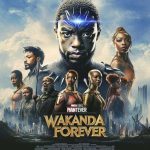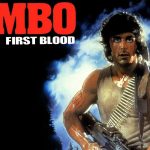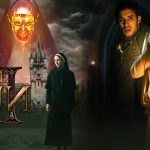“Godzilla: King of the Monsters 2019”
- movieslovers
- November 14, 2024
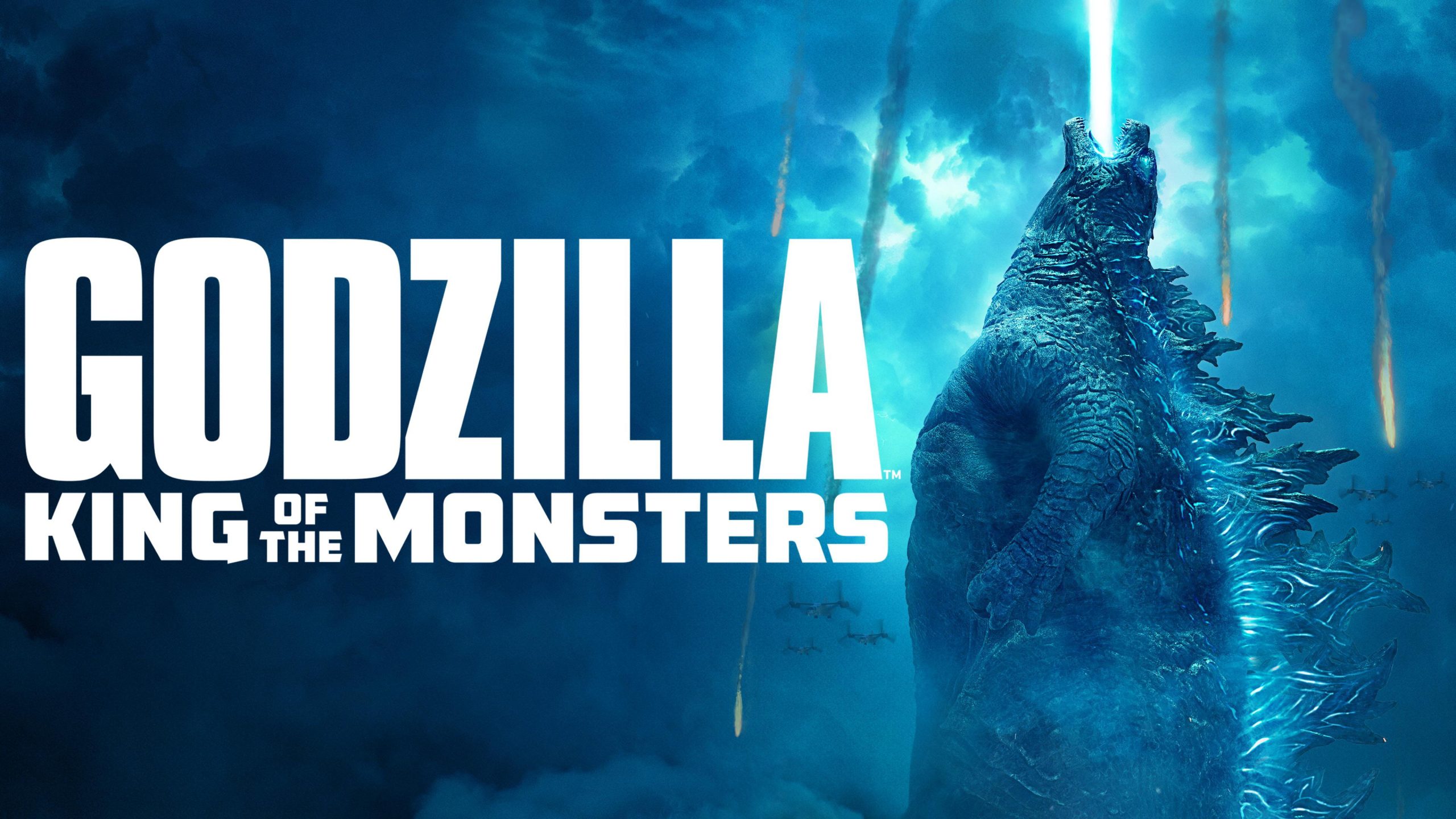
“Godzilla: King of the Monsters” (2019) is a science fiction monster film directed by Michael Dougherty and produced by Legendary Entertainment and Warner Bros. Pictures. It is the sequel to Godzilla (2014) and part of the MonsterVerse, a shared cinematic universe that also includes films like Kong: Skull Island (2017) and Godzilla vs. Kong (2021). The film is a visual spectacle that brings iconic kaiju (giant monsters) to the screen, showcasing epic battles and intense action while exploring human drama and the consequences of coexisting with these colossal beings.
Plot Summary
The film is set five years after the events of Godzilla (2014). The world is in turmoil as Titan creatures (massive, prehistoric monsters) are being awakened across the globe by a mysterious organization known as Monarch, a group of scientists and military personnel dedicated to studying these ancient beings.
The primary conflict in the film revolves around the return of Godzilla (voiced by Tory Kittles), the king of the monsters, and his battle against an array of other powerful Titans, including King Ghidorah, a three-headed dragon from another world who seeks to dominate Earth. Ghidorah, with his destructive power and ruthless nature, is a stark contrast to Godzilla, who, despite his destructive abilities, is seen as a protector of humanity.
The story focuses on Dr. Emma Russell (Vera Farmiga), a Monarch scientist whose research into Titans leads to the creation of a device, the ORCA, capable of communicating with these creatures. After the kidnapping of Emma and her daughter Madison (Millie Bobby Brown) by a rogue faction that believes in Titan supremacy, Emma is forced to use the ORCA to control the Titans and awaken Ghidorah to battle Godzilla.
As Ghidorah wreaks havoc on the planet, Godzilla rises to challenge him. The human characters, including Mark Russell (Kyle Chandler), Emma’s ex-husband, must navigate their moral choices while dealing with the chaos the Titans cause. The film culminates in a massive showdown between Godzilla and Ghidorah, with the fate of the world hanging in the balance.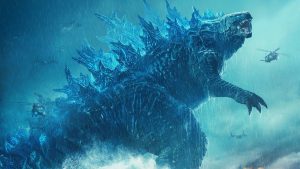
Key Themes
- The Power of Nature: The film explores the idea that the Titans, though terrifying, represent the raw and uncontrollable power of nature. Godzilla, while a destructive force, is also a protector, suggesting a theme of balance within nature. The struggle between Godzilla and Ghidorah represents the battle for control over this natural order, with humans caught in between.
- Humanity’s Relationship with the Earth: Godzilla: King of the Monsters raises questions about humanity’s role in the world and its interaction with the environment. The awakening of the Titans serves as a reminder that human actions can have catastrophic consequences, and the monsters’ return could be a sign of nature’s reckoning. The film asks whether humanity can coexist with these ancient creatures or if they must ultimately bow to their might.
- Sacrifice and Responsibility: Characters like Dr. Emma Russell and her family grapple with the moral implications of using the ORCA device to control the Titans. Emma’s desire to protect her daughter and the world from Ghidorah leads her to make difficult choices, ultimately questioning the sacrifices humans are willing to make in the face of overwhelming power.
- Power and Leadership: The film pits Godzilla against Ghidorah in a battle for supremacy. Godzilla, despite being a creature of destruction, is ultimately portrayed as the protector of Earth, symbolizing natural leadership. In contrast, Ghidorah is a malevolent force seeking domination, embodying the dangers of unchecked power.
- Chaos vs. Order: The film explores the chaos unleashed by the Titans and the efforts to restore some form of order, not just by humanity, but by Godzilla. The battle between these monsters symbolizes the larger struggle between chaos and the attempts by humans (and even other Titans) to rein in that chaos and preserve a semblance of balance.
Character Development and Performances
- Godzilla (voiced by Tory Kittles): As the central character, Godzilla’s arc is less about personal development and more about his role as a force of nature. He is depicted as a protector of the Earth, willing to fight to restore balance against the destructive Ghidorah. While not a conventional protagonist, Godzilla’s massive presence and symbolic role in the story make him one of the most compelling elements of the film.
- Dr. Emma Russell (Vera Farmiga): Emma Russell’s character is deeply conflicted. She has lost her family and is torn between her scientific desire to control the Titans and the moral consequences of that control. Farmiga portrays Emma as a complex, driven character who is both a victim and an instigator, ultimately playing a pivotal role in the chaos and the eventual resolution.
- Mark Russell (Kyle Chandler): Kyle Chandler plays Mark Russell, Emma’s ex-husband, who initially seeks revenge for the loss of his son, a tragedy that the Titans played a role in. Chandler’s performance adds an emotional anchor to the story, as Mark struggles with his grief and attempts to protect his daughter while dealing with the larger conflict between the Titans.
- Madison Russell (Millie Bobby Brown): Madison, Emma and Mark’s teenage daughter, is a key character who takes on an active role in the narrative. Millie Bobby Brown delivers a strong performance as a young woman caught in a world of chaos, balancing her desire to protect her family with her efforts to prevent the destructive plans of the rogue faction.
- King Ghidorah (voiced by Richard Dorton): The villainous three-headed dragon, Ghidorah, is portrayed as a destructive force that seeks to dominate Earth. Ghidorah’s appearance and attacks are visually stunning, and he serves as the perfect antagonist to Godzilla. The CGI effects used to bring Ghidorah to life make him one of the most visually striking creatures in the film.
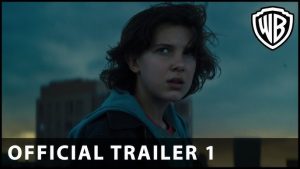
Cinematography and Visual Effects
The film’s visual effects are a highlight, with Industrial Light & Magic (ILM) handling the CGI that brings the Titans to life. The fight sequences, particularly the battles between Godzilla and Ghidorah, are grand in scale and awe-inspiring. The visual spectacle is complemented by the film’s use of light and shadow to create a sense of epic tension, with towering creatures clashing against a backdrop of fiery destruction and cityscapes. The cinematography enhances the weight and gravity of these monumental battles, immersing the audience in the chaos of the monster fights.
The design of the Titans, particularly Godzilla and Ghidorah, is detailed and vibrant, capturing their respective roles as forces of nature. Godzilla’s movements and design convey power and strength, while Ghidorah’s otherworldly appearance evokes a sense of menace and destruction.
Music and Soundtrack
The film’s score, composed by Bear McCreary, plays a significant role in building the tension and scale of the movie. The score is rich in orchestral bombast, enhancing the epic nature of the monster battles. McCreary’s use of thematic motifs for Godzilla and Ghidorah adds depth to the characters, with Godzilla’s theme symbolizing his protector role and Ghidorah’s theme evoking fear and chaos. The soundtrack helps to elevate the action and drama, making the stakes of the Titan battles feel even more significant.
Reception and Legacy
Upon its release, Godzilla: King of the Monsters was met with mixed to positive reviews from critics. While the film was praised for its visual effects, monster battles, and action sequences, some criticized the human characters and their storyline, which many felt took a backseat to the monster action. The movie grossed over $386 million worldwide, a solid performance but not as much as hoped given the high expectations and the large budget.
Despite the mixed reception, the film has a dedicated fanbase and is considered a worthy entry in the MonsterVerse franchise. It sets the stage for Godzilla vs. Kong (2021), which was expected to be the ultimate showdown between two of the most iconic monsters in cinema history.
Godzilla: King of the Monsters also serves as a love letter to long-time fans of the Godzilla franchise, featuring numerous references and nods to earlier Godzilla films, especially in terms of the design and behavior of the Titans. The film’s dedication to the original source material, along with its larger-than-life battles and visual spectacle, solidified its place in the ongoing MonsterVerse saga.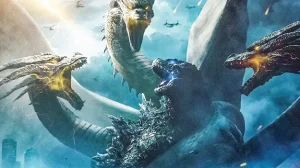
Fun Facts
- Monster References: The film features several other classic Toho kaiju (giant monsters) besides Godzilla and Ghidorah, including Mothra, Rodan, and King Kong (as a tease for Godzilla vs. Kong). These monsters all have their own moments of grandeur, contributing to the film’s rich mythology.
- Sound Design: The sound design for the monsters, particularly their roars, was a critical aspect of the film. Legendary sound designers used a combination of traditional monster sounds and modern techniques to create distinct roars for each Titan, adding an element of personality to each creature.
Conclusion
Godzilla: King of the Monsters (2019) is a visually spectacular and action-packed installment in the MonsterVerse, offering thrilling monster battles, stunning visual effects, and a deep dive into the mythology of the iconic kaiju. While it may not have received universal acclaim for its human-centered plot, it remains a favorite among fans of Godzilla and monster movies, with its larger-than-life creatures and epic confrontations being the film’s main attractions. With its stunning visuals, strong performances, and a narrative built on the collision of ancient titans, Godzilla: King of the Monsters is a must-see for fans of the genre and an exciting chapter in the ongoing MonsterVerse.



